The Power of Connection for Growth: HubSpot INBOUND 2023 Part II
Written by
Our first recap of takeaways and themes from INBOUND 2023 covered the new AI tools being developed by HubSpot. And there were a lot!
Although a primary focus of the event was how artificial intelligence is changing our world, the future of marketing and sales doesn’t solely rely new technology. It’s an exciting blend of AI-driven innovation AND human connection.
AI, when used intelligently, creates more opportunities for human connection
As much AI talk as there was, this year’s INBOUND wasn’t simply a dump — and promotion — of AI tools built by HubSpot. There were also numerous mentions of “connection” and how, no matter how advanced technology gets, customer connection will always remain a key to marketing.
“Customer expectations are changing, and businesses now have the opportunity to leverage AI to drive customer connection at scale,"
– Yamini Rangan, HubSpot CEO
Connection is the driving force behind growth, Yamini said in her opening spotlight presentation. Companies that maintain a connection with prospects throughout the customer journey see 19% more growth than average.
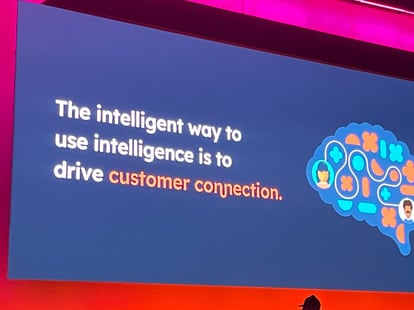
Photo from Yamini Rangan, HubSpot CEO, INBOUND 2023 presentation
As Yamini explained, the power of AI can drive customer connections … at scale. The ability to guide many prospects through the buyer journey more efficiently (and personally) than ever opens up possibilities unavailable before AI.
People want to converse, not convert
In a way, INBOUND 2023 felt like a union of new AI technology with last year’s INBOUND theme: “The Age of the Connected Customer.”
This year, however, AI-powered tools are fully in use throughout marketing, uncovering how customers choose a brand, how they act and react, and how they feel in a way never before possible. Businesses can now enhance customer connections using touchpoints tailored to just for their audiences.
Yamini said, “AI enables us to go beyond demographics and truly understand what motivates our customers. It's not just about what they buy; it's about why they buy.”
Marketing needs to follow customers’ leads and move from search to social. Why? Because customers are discovering products where they normally “travel” throughout the internet, often on social channels.
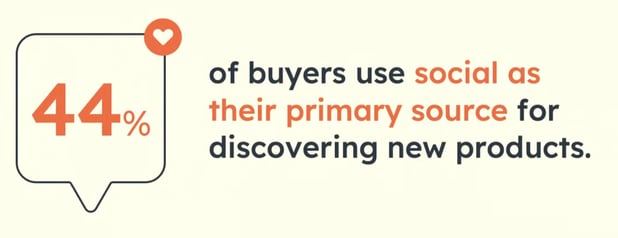
Source: Search Engine Journal, 134 Social Media Statistics You Need To Know For 2023
The stat above, shared by Yamini, is eye-opening yet requires a bit more clarity. It was shared by Search Engine Journel under the heading “Social Media Statistics For Business,” and specifically states: “44% of internet users aged 16 to 64 use social media as a primary source of information when they’re researching brands.”
What it really means is that a large chunk of consumers are having online conversations on social media that equate to researching brands (and new products). So, it’s not simply information being shared, it’s gaining personal insights, which are much more powerful.
RELATED: REGISTER FOR OUR UPCOMING HUBSPOT USER GROUP TO DEMO HUBSPOT'S NEW AI TOOLS
Modern marketers need to rethink connections
Moving forward, goals shouldn’t be about clicks, they should be about conversations. A click is an inefficient KPI. A simple chat, however — a helpful one-on-one conversation — not only results in someone getting what they want, it also builds loyalty.
Another shift? From personalized content to personal content. Once a prospect or customer has untrusted you with their contact information, they expect more than a casual connection, they want insights — and insights tailored specifically to them.
Dale Bertrand, CEO of Fire&Spark, continued that line of thinking. In his presentation on “SEO for Revenue,” he stated, “Rankings and traffic are empty calories when it comes to SEO.”
With SEO constantly changing, the objective should be to understand customers. Yes, keyword research is still helpful, but customer insights are more important.
The overall shift is from targeting generic keywords to really understanding customer intent and giving searchers the exact content they want in order to convert better.
“Writers are really ‘revenue growth specialists’ that just so happen to be writers,” Dale said. “Understand customers deeply and keep the focus on content quality,” he added.
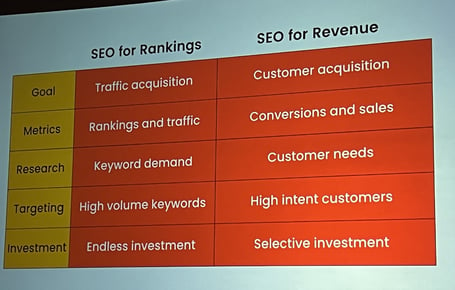
Photo from Dale Bertrand’s INBOUND 2023 presentation, "SEO for Revenue"
Not to hammer a point too hard (too late?), but Andrew Pitre, Head of Products and UX at HubSpot, called high-quality content “The Breakfast of Champions.” It kickstarts the buyer/customer journey and now, with AI being able to understand content, AI can frame business data in the context of customer needs.
HubSpot AI features will help us work smarter (not harder) by leveraging AI, automation, and integration, which will boost efficiency AND foster connections.
A final example of INBOUND’s emphasis on connections, this one from Sinead Bovell, futurist and founder of Waye. “AI allows us to have conversations with data,” she said. And to “unlock insights from data” that were unknown before. “We can add value with AI, not replace people. In fact, AI working with people creates superteams,” she added.
HubSpot introduced the inbound Flywheel Model at INBOUND 2018, which puts a premium on delighting customers to not only reduce churn, but inspire them to become advocates for your company and growing your business.
This year, HubSpot re-emphasized the concept of a customer-centric strategy, doubling down and breaking out a new acronym: “CCOM” which stands for “Customer-Centric Operating Model,” a term you’ll likely be hearing more about moving forward.
Want to learn more about using AI for industrial marketing and sales teams? Join us at the Manufacturing First Expo & Conference on October 25, 2023, in Green Bay, WI. Click below to learn more and register.
Subscribe To Our Blog
Information. Insights. Ideas. Get notified every time a new Weidert Group blog article is published – subscribe now!
You May Also Like...

Search Engine Optimization
How Falcon Rebuilt Industrial AI Search Visibility in 2025
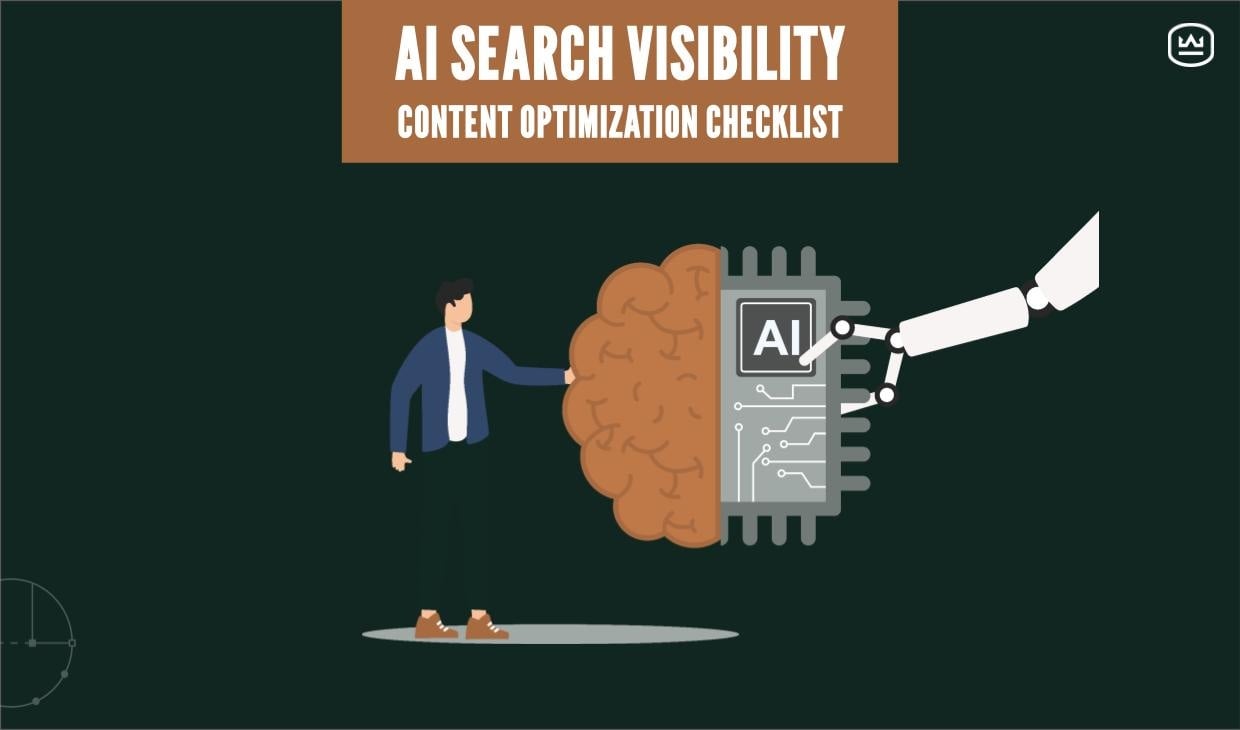
Search Engine Optimization
The New Search Visibility Checklist for AI-Era Content Marketing
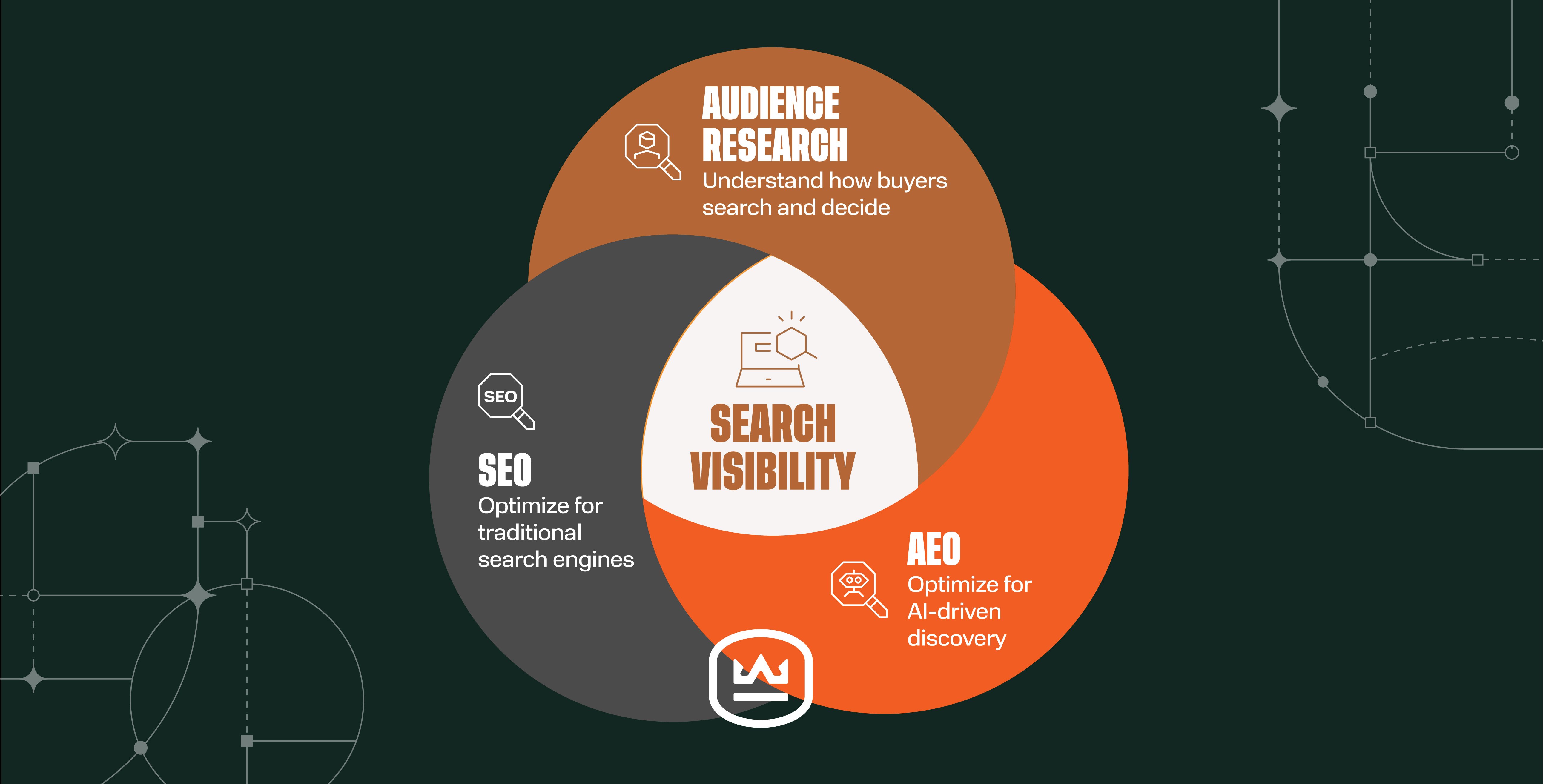
Search Engine Optimization
SEO Isn’t Dead. It’s Evolving: How B2Bs Can Stay Visible in the Age of AI
Accelerate Your Growth with
Weidert Group
If you’re ready to explore a partnership, request a personalized consultation with our team.

